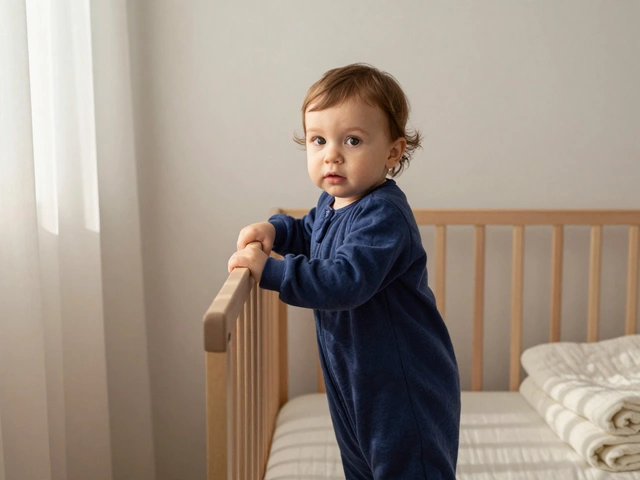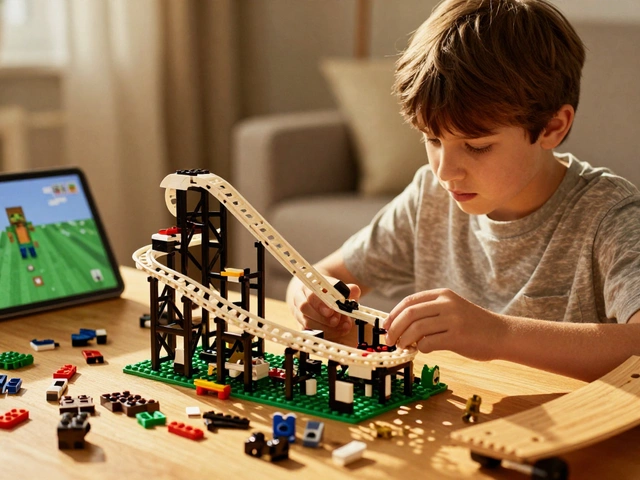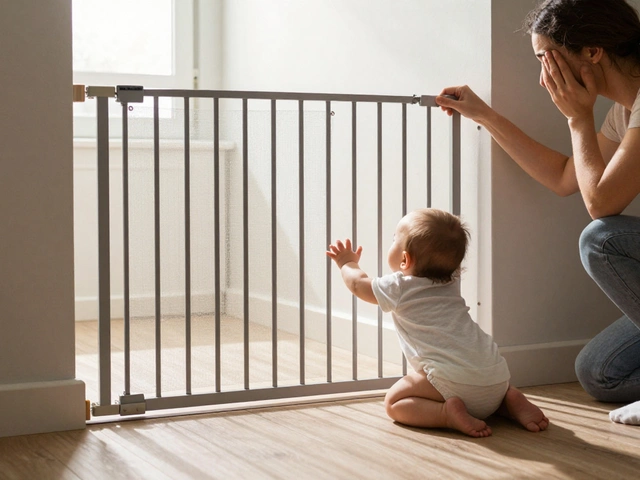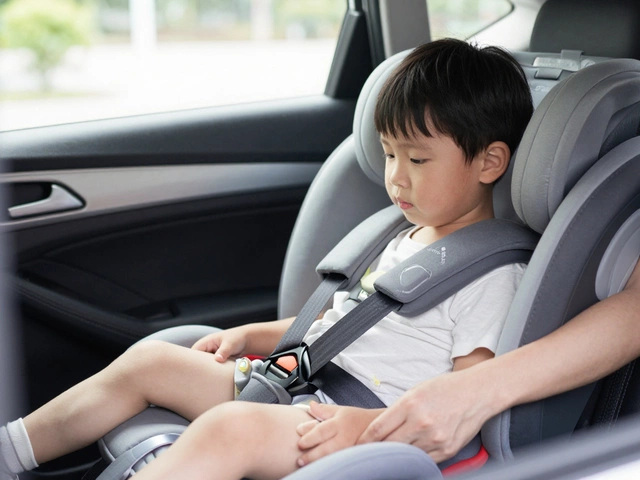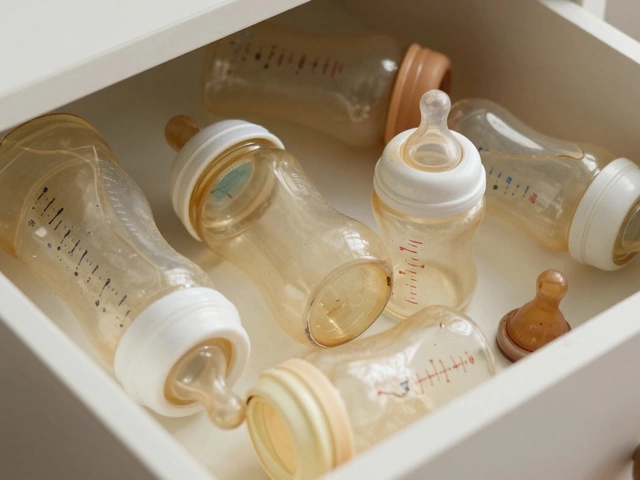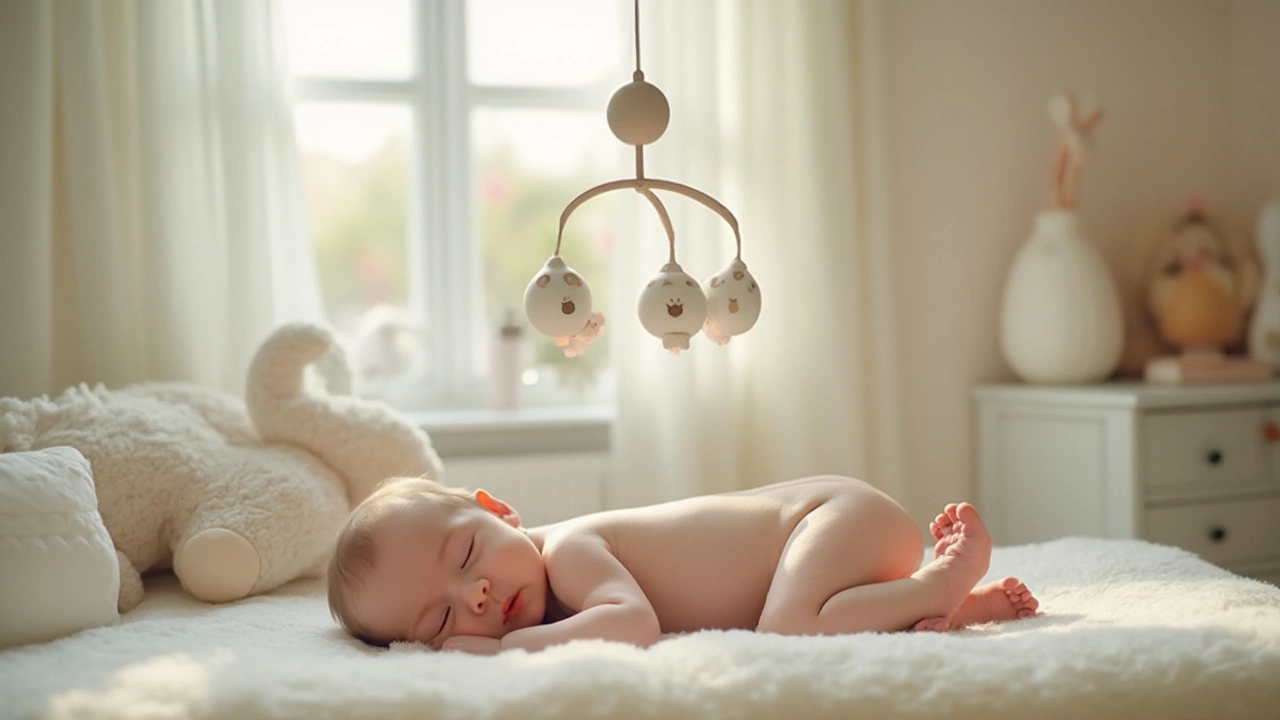
Swaddling newborns is a time-honored tradition that has comforted infants for generations. It often creates an environment that reminds them of the secure confines of the womb. Yet, questions about whether newborns can or should sleep unsaddled often arise among new parents seeking the best for their baby. Understanding the nuances of this choice is essential for fostering healthy sleep habits.
A softly swaddled baby might evoke images of serenity, but not all infants find swaddling comforting. Some may resist the constraint, preferring to sleep with the freedom to wiggle and stretch. It's crucial to consider whether swaddling is suitable for your child, keeping in mind safety recommendations such as avoiding loose blankets that could cover the face.
As you navigate the early days of parenthood, weighing the benefits of swaddling against your baby’s individual preferences is part of discovering the rhythm that works best for your family. Explore expert tips and alternatives to ensure a safe, snuggly sleep environment for the littlest member of your household.
- The Basics of Swaddling
- Benefits of Swaddling for Newborns
- When and Why to Consider Unsaddled Sleep
- Safe Sleep Practices for Newborns
- Expert Tips and Alternatives to Swaddling
The Basics of Swaddling
Swaddling is an ancient practice that traces its origins back centuries, serving as a comforting technique to help infants adjust to life outside the womb. The idea behind swaddling is to mimic the snug, warm environment of the womb, theoretically making newborns feel secure and less fussy. This simple act involves wrapping the baby in a soft blanket in such a way that their arms and legs are gently held close to their bodies. Many cultures have embraced swaddling, using it not only to soothe babies but also to help them sleep longer and more soundly.
To swaddle a baby correctly, it's crucial to use a thin, breathable blanket to prevent overheating. Start by laying the blanket out flat, folding one corner down slightly. Place your newborn on their back with their head above this folded edge. As you fold the first side of the blanket over your baby's body, tuck it snugly under their back. The blanket's bottom should be brought up over their feet, leaving enough room for the hips to move. Finally, wrap the remaining side over them, securing it gently underneath. This technique not only keeps babies warm but can also suppress the startle reflex that often wakes them.
Studies have suggested that swaddling might promote longer, more restful sleep cycles in infants. According to the American Academy of Pediatrics, swaddling can be a useful way to help calm infants when it is done correctly. However, there are some risks to consider. Improper swaddling, such as wrapping too tightly or covering the face, poses dangers like suffocation or hip dysplasia. Parents should always place their baby on their back to sleep and monitor the baby to ensure they aren't rolling over, which can be risky if swaddled.
“The key to successful swaddling is to ensure the baby’s hips have enough room to move and the wrap isn’t too tight,” says Dr. Jennifer Shu, a pediatric care expert.
In deciding whether to swaddle, parents must weigh these benefits against potential risks. Some babies may not tolerate swaddling well, in which case it’s important to explore other ways to provide them comfort and warmth. As your baby grows and starts showing signs of rolling over or consistently breaking out of the swaddle, it may be time to consider alternate sleep practices.
Benefits of Swaddling for Newborns
Swaddling, a gentle art passed down through generations, offers a multitude of benefits for newborns that go beyond just warmth. Primarily, swaddling helps recreate the cozy womb-like conditions that a baby has grown accustomed to during the nine months of pregnancy. When tightly swaddled in a soft blanket, newborns often feel more secure, which can significantly decrease instances of the startle reflex—the natural jerky movements that may otherwise wake them up abruptly. This means that both parents and babies are more likely to enjoy longer and more restful sleep cycles, a boon for everyone involved.
Another remarkable advantage of swaddling lies in its calming effect on a baby’s nervous system. When babies are swaddled snugly, they are less prone to stress and anxiety. For many little ones, this translates to reduced crying spells, as the security of the swaddle mimics the gentle hug they received while nestled in the womb. This calming influence not only helps the baby but also offers an emotional relief for parents who are getting to know their child. Swaddling often becomes a tool that eases the difficult early days of parenting.
Moreover, swaddling is known to promote deeper sleep by encouraging babies to sleep on their backs—a sleep position recommended by health professionals worldwide to reduce the risk of Sudden Infant Death Syndrome (SIDS). The American Academy of Pediatrics suggests that a properly swaddled infant can sleep safely on their back without the risk of rolling over prematurely.
"Swaddling, when done correctly, can be an effective technique to help calm infants and promote sleep," states Dr. Rachel Moon, a well-known pediatrician and sleep expert.This insight reinforces the practice as a beneficial component of infant care routines without detracting from established safe sleep practices.
While these benefits are potent motivators for swaddling, parents should remain aware of their baby's individual responses. Not all infants respond the same way to swaddling, and some might resist the constraint of the fabric, preferring instead to sleep unswaddled. Observing your baby’s cues and staying informed about comfortable alternatives, such as wearable blankets or swaddling sacks, can be critical for developing a safe and comforting sleep routine.
In conclusion, the practice of swaddling is steeped in tradition but rests firmly upon its ability to promote comfort and safety for newborns. Whether it’s ushering them into a serene sleep or simply soothing a fussy infant, swaddling holds its well-deserved place among invaluable infant care techniques. By understanding its many benefits, parents can make well-informed decisions tailored to their child’s unique needs.
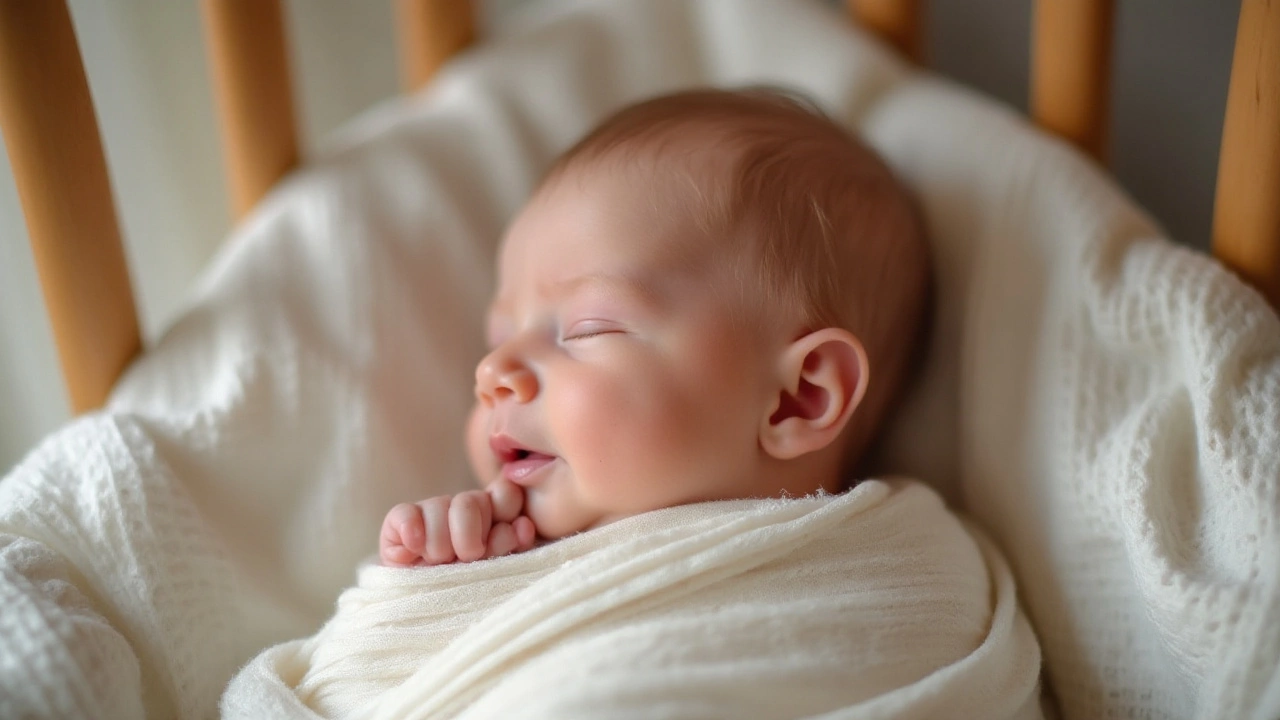
When and Why to Consider Unsaddled Sleep
Parents often face the dilemma of whether their newborn can truly benefit from unswaddled sleep. While swaddling is known for recreating the warmth and snug sensation of the womb, leading to more settled sleep, not every baby requires the cocooned environment to slumber peacefully. Some babies may naturally prefer the freedom that comes from sleeping without a snug wrap. As they adjust to life outside the womb, certain newborns exhibit a noticeable preference for stretching their arms and legs, suggesting that unswaddled sleep might actually be more comforting for them.
Recognizing when to opt for unsaddled sleep over swaddling can be prompted by various signs. You might notice your baby fussing or attempting to free themselves from the swaddle, which can be a clue that they enjoy having free limbs. Unswaddled sleep can also become necessary as your child starts displaying signs of rolling over, typically around three to four months, where safety takes precedence. This is supported by the American Academy of Pediatrics' suggestion to stop swaddling when a baby starts trying to roll over, a crucial turning point to prevent any potential for suffocation.
Freedom of Movement
Many infants thrash and kick as they sleep, a behavior that might be hindered by swaddling. They may experience more restful sleep when their natural movements aren’t restricted. Allowing your infant to sleep unswaddled encourages them to settle themselves using self-soothing gestures, like thumb sucking or finding a comfy sleep position. These movements are a part of their self-regulation process, which is vital for their development and can eventually lead to longer sleep stretches at night.
Promoting Natural Development
Another compelling reason to consider unswaddled sleep is the potential for promoting healthy hip development. The International Hip Dysplasia Institute warns that wrapping legs too tightly can pose an issue for the natural positioning of a baby’s hips. Unsaddled sleep, or using a hip-healthy alternative like a sleep sack, allows the hips to move freely and develop properly. Sleeping without a swaddle gives the hips ample room to assume an inward and outward position, similar to being seated on a chair, which is essential for their natural growth.
"At some point, your baby will naturally transition to unswaddled sleep as they grow," explains Dr. Carol Marcus, a pediatric sleep expert. "This transition can be seamless if you observe your baby’s cues on their preference for sleeping with arms out or showing signs of wanting more mobility during sleep."
As parents, adapting to your baby’s changing needs necessitates a flexible approach. While swaddling might be comforting initially, it is just as vital to acknowledge when the signals point to a need for space and freedom. Observing your baby's cues, trusting your instincts, and staying informed about safe sleep guidelines will ensure you make the best decision for your child’s sleep journey.
Safe Sleep Practices for Newborns
Navigating the world of newborn sleep can be a daunting task for any new parent, but understanding safe sleep practices is crucial. These guidelines are designed to minimize risks while ensuring a comfortable environment for infants to rest. The foundation of safe sleep begins with placing your baby on their back for every sleep, including naps. This position significantly reduces the risk of Sudden Infant Death Syndrome (SIDS), which is a leading concern among parents of young infants. Knowing that the back is the safest sleep orientation provides peace of mind.
Creating a safe sleep space involves more than just the right position—it's also about the sleeping surface. Always choose a firm and flat mattress covered with a fitted sheet, avoiding the temptation to use soft bedding like blankets or pillows in the crib. These items can pose suffocation hazards if they get too close to the baby's face. Opt instead for sleep sacks or one-piece sleepers, ensuring your baby stays warm and cozy without the risks associated with loose blankets. This technique not only keeps infants safe but also echoes the principles of swaddling by offering that snug feeling without the constraints.
Another aspect to consider in fostering infant sleep safety is maintaining a clutter-free crib. Toys, stuffed animals, and bumper pads, though often perceived as comforting, should be kept out of the crib. An uncluttered sleeping area ensures that nothing interrupts your baby's breathing or sleep quality. It's a simple yet effective approach that parents can take to heart when setting up their nursery or sleep areas throughout their home. Ensuring free air circulation is one small but impactful step towards healthy sleep habits.
Room sharing, without bed-sharing, is recommended for at least the first six months, ideally up to a year. Placing the crib or bassinet in your bedroom keeps your baby close by, which can make nighttime feedings or comforting a more seamless experience. This proximity helps many parents feel connected and reassured, knowing their little one is just an arm's reach away. Yet, experts advise against allowing babies to sleep in the same bed as parents to prevent accidental suffocation or overheating.
Temperature regulation plays a crucial role in safe sleep practices. Overheating is a factor associated with increased risk for SIDS. Keep your baby's room at a comfortable temperature, similar to what you would find comfortable wearing a light layer. Dress your baby in appropriate sleep attire, and use fan circulation when necessary to maintain an optimal environment. This balanced approach supports healthy sleep patterns while safeguarding against potential dangers.
"Clear the Crib, Save the Baby. It's That Simple," advises the American Academy of Pediatrics, underscoring the importance of keeping sleeping environments as minimalist as possible.
Lastly, pacifiers have been shown to have protective benefits during sleep. Offering a pacifier at nap time and bedtime can help soothe your child and can potentially reduce sleep risks. If your baby seems uninterested in a pacifier, don't force it, but if they do take to it, ensure it doesn't have a string or attached toy. Embracing these diverse safety guidelines, supported by existing research and expert recommendations, can provide a comprehensive foundation for nurturing your baby's sleep in a way that feels attuned to their evolving needs and your parental instincts.
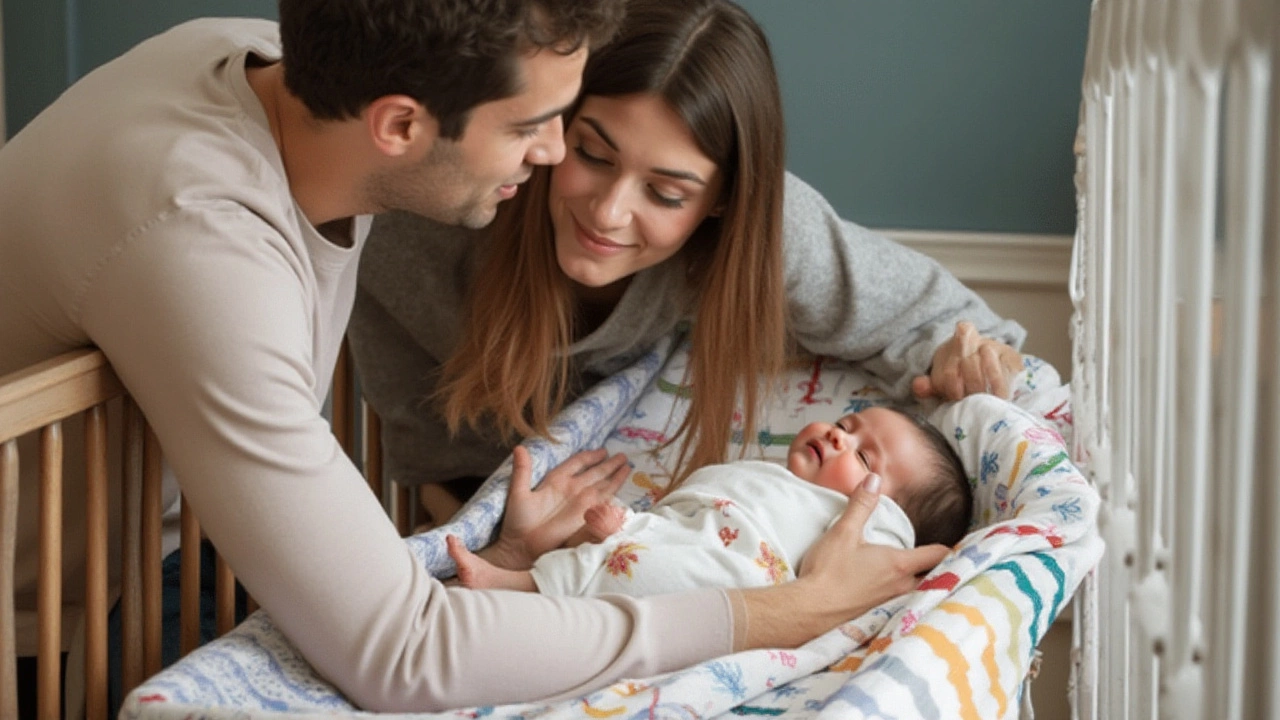
Expert Tips and Alternatives to Swaddling
For new parents, deciding whether to continue swaddling or explore alternatives involves delving into various expert insights and considering the unique needs of your newborn. It turns out that not all infants rely on swaddling for comfortable sleep, and while some may thrive in a snug wrap, others may find liberation in more unrestricted sleep attire. To strike the right balance, it’s crucial to weigh the options with care and understanding. Noteworthy experts often suggest paying close attention to your baby’s cues and comfort levels, as each baby has a distinct personality and preference that may make traditional swaddling less appealing. Instead, exploring alternatives that promote similar soothing sensations without sacrificing comfort can be beneficial.
Kicking off the list of suggested options is the wearable blanket, often referred to as a sleep sack. These ingenious designs offer the warmth and safety of swaddles while giving babies the essential freedom to move their limbs. This method has proven effective for many, easing the transition from swaddling while retaining that sense of security. Sleep sacks are a perfect example of modern innovation in babywear, proving that caring for a baby's sleep involves integrating traditional wisdom with contemporary solutions. Most importantly, they reduce risks associated with traditional blankets in the crib, as these are fitted and cannot move around the baby's face. Dr. Rachel Moon, a notable pediatric sleep expert, argues, "Sleep sacks are a safe swaddling alternative, especially for parents worried about the risks associated with loose bedding in cribs."
Another essential tool in a caregiver’s arsenal is the pacifier. While it might seem unrelated, using a pacifier can offer a surprising alternative to calm a baby during the sleep process. The gentle suckling action can mimic the sensation of breastfeeding, which is naturally soothing for most infants. Interestingly, research suggests that pacifiers might reduce the risk of certain sleep-related complications in newborns. Adoption of pacifiers is often recommended by pediatricians as part of a comprehensive sleep safety strategy.
In our journey towards more restful nights, music and natural white noise also play pivotal roles. More than just a soothing background sound, carefully curated lullabies or gentle waves of white noise can provide babies with familiar and comforting auditory cues. This helps them self-soothe and potentially regulate their cardiac rhythms, coaxing them gently into tranquility. Using a sound machine or even a white noise smartphone app is often recommended to create an optimal snoozing environment for infant sleep. Be mindful, however, of volume levels to protect delicate ears.
To further expand options, consider infant massage and baby yoga, which emphasize nurturing physical contact and gentle movements. Through calming exercises, these practices not only promote relaxation and deeper sleep but also enhance parent-child bonding. In essence, they recreate that warm and familiar feeling of being held—a core benefit of swaddling. Even if you haven't mastered these techniques, there are plenty of resources available to learn easily and effectively.
While the debate on swaddling endures, the landscape of baby sleep methods continues to evolve. As technology and understanding of baby comfort advance, so too do the possibilities for ensuring safety and warmth without traditional swaddling. When choosing the right method, it’s important to remember that responsive parenting—reacting to your baby’s signals and comfort levels—is the cornerstone of effective childcare, particularly when it comes to newborn sleep.


